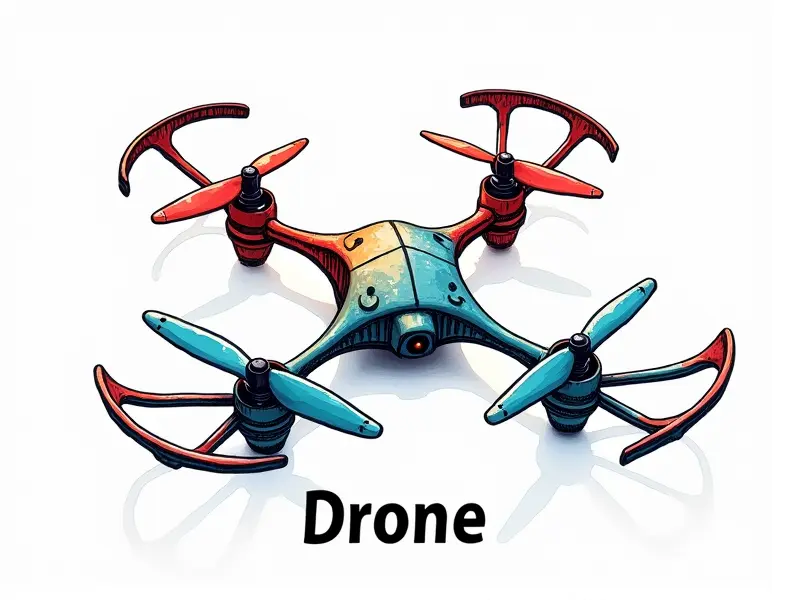FPV drone propeller count?

FPV Drone Propeller Count: Understanding the Impact on Performance and Agility
When it comes to FPV (First-Person View) drone racing, choosing the right number of propellers can significantly impact your drone's performance. Whether you're a seasoned pilot or just starting out, understanding the benefits and drawbacks of different propeller counts is crucial for achieving optimal flight characteristics.
Why Do FPV Racing Drones Use 4 or 6 Props?
The most common configurations in FPV racing drones are quadcopters (4 props) and hexacopters (6 props). Each configuration offers unique advantages:
- Quadcopters: Known for their simplicity, agility, and maneuverability. They excel in tight spaces and high-speed maneuvers.
- Hexacopters: Provide redundancy and stability, making them more forgiving during crashes or turbulence.
Choosing the Right Prop Count for Your FPV Drone
The choice between 4 and 6 props depends on your specific needs:
- Quadcopters (4 Props): Ideal for pilots seeking high agility, quick response times, and compact design.
- Hexacopters (6 Props): Suitable for those prioritizing stability, redundancy, and better lift capabilities.
Optimal Propeller Configuration for FPV Racing
The optimal propeller configuration varies based on the intended use:
- Agility-focused builds: Opt for quadcopters to maximize speed and maneuverability.
- Stability-focused builds: Hexacopters are better suited for handling gusty conditions and providing a smoother flight experience.
How Many Props Does an FPV Drone Need?
The number of props needed depends on your goals:
- For high-speed racing: 4 propellers offer the best balance between speed and agility.
- For stability and redundancy: 6 propellers provide additional lift and resilience against crashes.
The Impact of Propeller Number on FPV Drone Flight
Different prop counts affect various aspects of flight:
- Lift capacity: More props generally mean more lift, which is beneficial for heavier payloads or larger frames.
- Stability and control: Hexacopters offer better stability in windy conditions compared to quadcopters.
- Battery consumption: Quadcopters tend to be more efficient, consuming less battery power than hexacopters.
Understanding Propeller Counts in FPV Drone Builds
The prop count influences the overall design and performance:
- Simplicity and ease of maintenance: Quadcopters are simpler to build and maintain due to fewer components.
- Complexity and robustness: Hexacopters require more complex wiring but offer a higher level of redundancy.
Benefits of Different Propeller Counts in FPV Racing
Different prop counts cater to various racing scenarios:
- Quadcopters: Perfect for indoor and tight-space races where quick turns are essential.
- Hexacopters: Suitable for outdoor races in varied weather conditions, providing a smoother flight experience.
Best Propeller Arrangements for FPV Drone Speed and Agility
To maximize speed and agility:
- Select quadcopters with optimized prop sizes and motor setups to enhance maneuverability.
- Tune your ESCs (Electronic Speed Controllers) for precise control over each motor, ensuring quick response times.
Common Mistakes with FPV Drone Propeller Selection
Avoid these common pitfalls:
- Oversizing props: Using overly large propellers can lead to reduced efficiency and increased battery consumption.
- Neglecting stability: Focusing solely on speed without considering stability may result in crashes or poor handling.
- Ignoring redundancy: For hexacopters, ensure all motors are properly balanced for optimal performance and crash recovery.
Optimal Prop Count for FPV Drone Performance
The ideal prop count depends on your specific requirements:
- Prioritize agility: Choose quadcopters for their unmatched maneuverability and quick response times.
- Value stability and redundancy: Opt for hexacopters to benefit from enhanced lift capacity and crash resilience.
Propeller Count Guide for FPV Drone Enthusiasts
To make an informed decision:
- Evaluate your racing environment: Consider the terrain, weather conditions, and space constraints.
- Weigh performance priorities: Determine whether speed, stability, or redundancy is more important for your build.
- Research and test different setups: Experiment with various prop counts to find what works best for you.
In conclusion, the choice between quadcopters and hexacopters in FPV racing drones hinges on your specific needs. Quadcopters offer unmatched agility and simplicity, while hexacopters provide stability and redundancy. By understanding the impact of propeller counts on flight performance, you can make an informed decision that enhances your FPV drone's capabilities.

